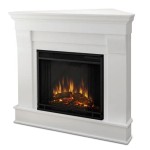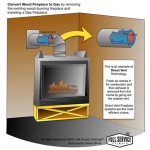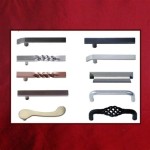Are Electric Fireplace Heaters Energy Efficient?
Electric fireplace heaters have gained popularity as supplemental heating solutions, offering aesthetic appeal and localized warmth. A common question arises regarding their energy efficiency: Are they a cost-effective method for heating a space? This article examines the energy efficiency of electric fireplace heaters, exploring the factors influencing their performance and comparing them to alternative heating systems.
Understanding the energy efficiency of any heating appliance requires a clear definition of what constitutes "efficient." In the context of heating, efficiency refers to the ratio of useful heat output to the electrical energy input. A highly efficient heater converts a large percentage of the electricity it consumes into heat, minimizing energy waste. Inefficient heaters, conversely, consume a significant amount of electricity without producing a corresponding amount of usable heat.
Electric heaters, including electric fireplaces, operate on a principle of resistive heating. Electricity passes through a heating element, which resists the flow of current. This resistance generates heat, which is then dispersed into the surrounding environment. The efficiency of this process is generally high, approaching 100% in ideal conditions. This is because almost all the electrical energy consumed is converted into heat. However, this does not automatically translate to overall energy efficiency in practical applications considering factors such as heat distribution and thermostat control.
Key Point 1: Conversion Efficiency vs. Overall Efficiency
While electric fireplace heaters boast near 100% conversion efficiency, it is crucial to differentiate this from overall system efficiency. Conversion efficiency only accounts for how effectively electricity is transformed into heat. However, the effectiveness of distributing this heat throughout a room and maintaining a consistent temperature significantly influences the overall energy efficiency of the heater.
Factors impacting overall efficiency include the size of the room, insulation levels, draftiness, and the thermostat's accuracy. A large, poorly insulated room will require more energy to heat than a small, well-insulated space. Drafts allow heat to escape, forcing the heater to work harder to maintain the desired temperature. An inaccurate thermostat can lead to temperature fluctuations, causing the heater to cycle on and off more frequently, consuming more energy than necessary.
Therefore, while the electric fireplace heater can convert nearly all the electricity it uses into heat, the actual amount of energy required to achieve and maintain a comfortable temperature can vary significantly based on external factors. A supplemental heater, even one that is highly efficient at conversion, may not be the most energy-efficient choice for heating an entire home or a large, poorly insulated room.
Furthermore, the type of heating technology used within the electric fireplace influences its energy consumption. Some models utilize infrared heating, which heats objects directly rather than the air. This can result in a more targeted and potentially more energy-efficient heating experience in certain situations, especially where occupants are mainly concerned with feeling warm directly in front of the fireplace. However, infrared heating may not be as effective in uniformly heating an entire room.
Other electric fireplaces use a fan to circulate warm air. The effectiveness of this fan in distributing heat uniformly will also influence the overall energy efficiency. A powerful fan can quickly circulate warm air throughout the room, while a weak fan might only heat the area immediately surrounding the fireplace, leaving other areas feeling cold.
Key Point 2: Comparing Electric Fireplace Heaters to Other Heating Systems
To assess the energy efficiency of electric fireplace heaters accurately, it is necessary to compare them to alternative heating systems. Common alternatives include central heating systems (furnaces, boilers), heat pumps, and space heaters.
Central heating systems, fueled by natural gas or oil, typically have an Annual Fuel Utilization Efficiency (AFUE) rating. This rating indicates the percentage of fuel converted into usable heat. High-efficiency furnaces may have AFUE ratings of 90% or higher. While the conversion efficiency of central heating systems may be slightly lower than that of electric fireplace heaters, they can be more cost-effective for heating an entire home, especially in regions with cold climates and relatively low natural gas prices.
Heat pumps offer a potentially more energy-efficient alternative, particularly in moderate climates. Heat pumps transfer heat from one location to another rather than generating it directly. In heating mode, they extract heat from the outside air (even in cold temperatures) and transfer it indoors. Heat pumps have a Coefficient of Performance (COP) rating, which indicates the ratio of heating output to electrical energy input. A COP of 3, for example, means that the heat pump produces three units of heat for every one unit of electricity consumed. This makes heat pumps significantly more efficient than electric resistance heaters.
However, the efficiency of heat pumps decreases as the outside temperature drops. In extremely cold climates, they may require supplemental resistance heating, which reduces their overall efficiency. Electric fireplace heaters might be considered to supplement the heat pump in these extremely low temperatures.
Compared to other electric space heaters, electric fireplace heaters generally operate on the same principle of resistive heating. Therefore, their energy efficiency is largely comparable. The primary differences lie in their aesthetic design and features, such as realistic flame effects. The choice between an electric fireplace heater and a standard space heater often comes down to personal preference rather than a significant difference in energy efficiency.
The cost of electricity versus other fuels also plays a pivotal role in determining the overall cost-effectiveness. In areas where electricity prices are high, electric fireplace heaters may be more expensive to operate than natural gas furnaces, even if their conversion efficiency is slightly higher. It's vital to consider the local energy prices when assessing the economic viability of different heating options.
Key Point 3: Optimizing the Energy Efficiency of Electric Fireplace Heaters
Several strategies can be implemented to optimize the energy efficiency of electric fireplace heaters. These strategies focus on minimizing heat loss, improving thermostat control, and using the heater strategically.
Improving insulation is arguably the most effective way to reduce heat loss. Insulating walls, ceilings, and floors can significantly reduce the amount of heat required to maintain a comfortable temperature and reduce your overall energy bill. Sealing drafts around windows and doors is also crucial. Caulking and weather stripping can prevent heat from escaping and cold air from entering, reducing the workload on the heater.
Using a programmable thermostat can help to regulate the temperature more effectively. A programmable thermostat allows users to set different temperatures for different times of the day, reducing energy consumption when the room is unoccupied. For example, the temperature can be lowered at night or when the occupants are away at work or school.
Strategic use of the electric fireplace heater is also important. Instead of using it to heat an entire home, focus on using it to heat specific rooms or zones that are being actively used. This localized heating approach can be more energy-efficient than relying on a central heating system to heat the entire house, even if some rooms are unoccupied. Also, consider using it only when needed instead of leaving it running continuously throughout the day or night.
Regular maintenance can also improve the efficiency and longevity of the heater. Clean the heating element and fan regularly to remove dust and debris, which can hinder performance. Check the thermostat for accuracy and replace it if necessary. Ensuring that the heater is in good working order will help to maximize its energy efficiency and prevent breakdowns.
Consider models with energy-saving features, such as adjustable thermostats, timers, and eco-mode settings. These features allow users to fine-tune the heater's operation to minimize energy consumption while maintaining a comfortable temperature. Some models also incorporate sensors that detect when the room is unoccupied and automatically turn off the heater.
Finally, be mindful of the heater's power consumption. Electric fireplace heaters typically have a wattage rating, which indicates the amount of electricity they consume per hour. Choose a model with a wattage that is appropriate for the size of the room being heated. A larger heater with a higher wattage will consume more energy than necessary to heat a small room.
In summary, the energy efficiency of electric fireplace heaters is a multifaceted issue influenced by factors beyond conversion efficiency. Understanding these factors and implementing strategies to optimize performance are crucial for making informed decisions about their use as a heating solution.

Are Electric Fireplaces Energy Efficient We Love Fire

Are Electric Fireplaces Energy Efficient Direct Learning Center

Are Electric Fireplaces Energy Efficient Direct Learning Center

Are Electric Fireplaces Energy Efficient We Love Fire

Electric Fireplace Heater Are They Effective Types And Specs

Energy Efficiency Benefits Of Purchasing An Electric Fireplace Uintah Fireplaces

How Energy Efficient Is An Electric Fireplace

Mythbusters Electric Fires Dimplex

Are Electric Fireplaces Energy Efficient We Love Fire
The 6 Best Electric Fireplace Heaters Of 2024
Related Posts








